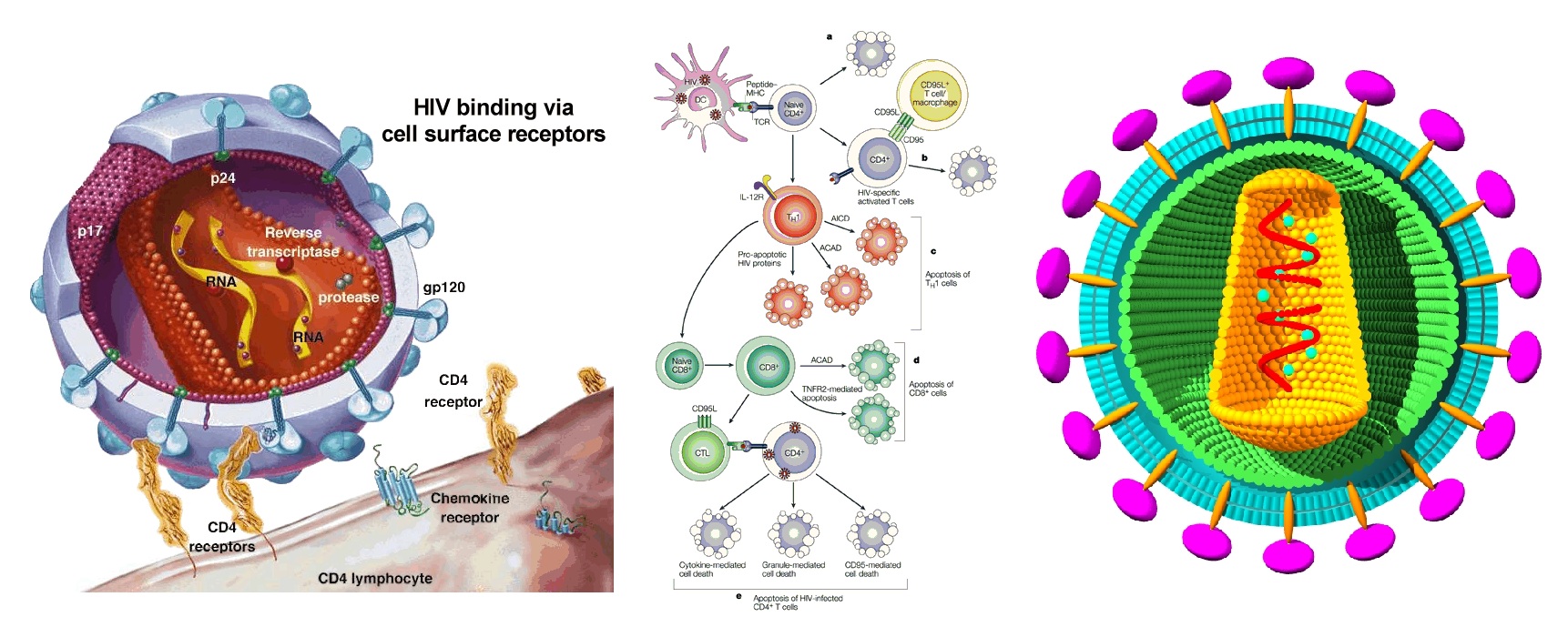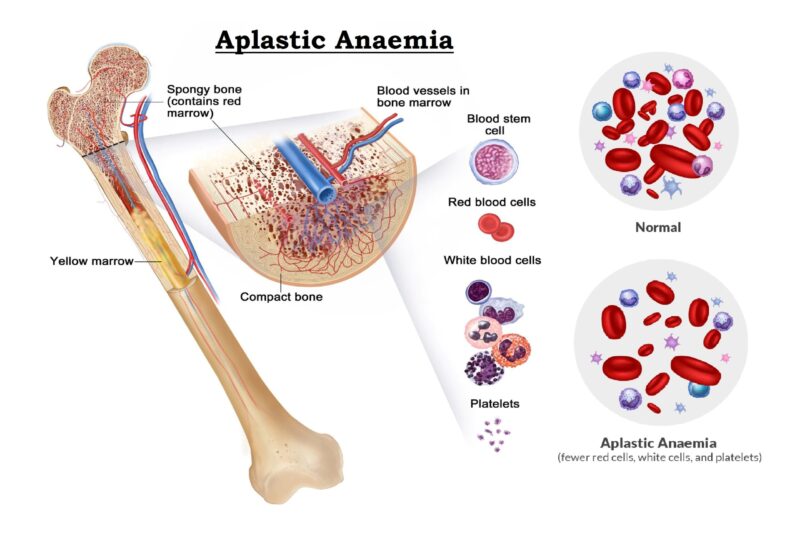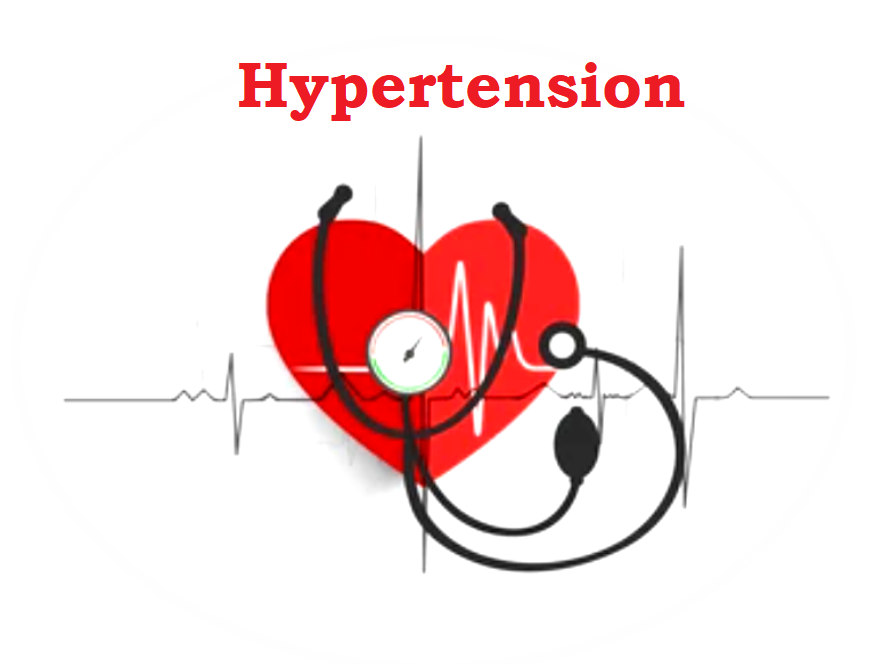Acquired Immunodeficiency Syndrome (AIDS) : Sign & Symptoms, Transmission, Diagnosis, Treatment & Prevention
Acquired Immunodeficiency Syndrome (AIDS) is a chronic viral infection, potentially life-threatening condition caused by the Human Immunodeficiency Virus (HIV). By damaging our immune system, HIV interferes with our body's ability to fight the organisms that cause disease. Acquired Immunodeficiency Syndrome (AIDS) is a global pandemic. As of 2014, approximately 37 million people have HIV worldwide with the number of new infections that year being about 2 million. This is down from 3.1 million new infections in 2001. Of these 37 million more than half are women and 2.6 million are less than 15 years old. It resulted in about 1.2 million deaths in 2014, down from a peak of 2.2 million in 2005.
HIV is a Sexually Transmitted Infection (STD). It can also be spread by contact with infected blood or from mother to child during pregnancy, childbirth or breast-feeding. Without medication, it may take years before HIV weakens our immune system to the point that we have AIDS. HIV destroys our CD4 cells (a specific type of leukocytes that plays a large role in helping our immune system. Our immune system weakens as more CD4 cells are killed. We can have an HIV infection for years before it progresses to AIDS. People infected with HIV progress to AIDS when their CD4 count falls below 200 or they experience an AIDS-defining complication. There's no cure for HIV/AIDS, but there are medications that can dramatically slow the progression of the disease. These drugs have reduced AIDS deaths in many developed countries. But HIV continues to decimate populations in Africa, Haiti and parts of Asia.
Sign & Symptoms
The symptoms of HIV and AIDS vary, depending on the phase of infection.
Primary infection (Acute HIV)
The majority of people infected by HIV develop a flu-like illness within a month or two after the virus enters the body. This illness, known as primary or acute HIV infection, may last for a few weeks. Possible signs and symptoms include:
- Fever
- Headache
- Muscle aches and joint pain
- Rash
- Sore throat
- Swollen lymph glands, mainly on the neck
Although the symptoms of primary HIV infection may be mild enough to go unnoticed, the amount of virus in the bloodstream (viral load) is particularly high at this time. As a result, HIV infection spreads more efficiently during primary infection than during the next stage of infection.
Clinical latent infection (Chronic HIV)
In some people, persistent swelling of lymph nodes occurs during clinical latent HIV. Otherwise, there are no specific signs and symptoms. HIV remains in the body, however, and in infected white blood cells.
Clinical latent infection generally lasts around 10 years if the person are not receiving antiretroviral therapy. This phase can last for decades in people taking antiretroviral medications. But some people progress to more severe disease much sooner.
Early symptomatic HIV infection
As the virus continues to multiply and destroy immune cells, person may develop mild infections or chronic signs and symptoms such as:
- Fever
- Fatigue
- Swollen lymph nodes — often one of the first signs of HIV infection
- Diarrhea
- Weight loss
- Oral yeast infection (thrush)
- Shingles (herpes zoster)
Progression to AIDS
If the person receive no treatment for HIV infection, the disease typically progresses to AIDS in about 10 years. By the time AIDS develops, his/her immune system has been severely damaged, making the person susceptible to opportunistic infections (Diseases that wouldn't usually trouble a person with a healthy immune system).
The signs and symptoms of some of these infections may include:
- Soaking night sweats
- Recurring fever
- Chronic diarrhea
- Persistent white spots or unusual lesions on your tongue or in your mouth
- Persistent, unexplained fatigue
- Weight loss
- Skin rashes or bumps
 ROUT OF TRANSMISSION OF HIV
ROUT OF TRANSMISSION OF HIV
To become infected with HIV, infected blood, semen or vaginal secretions must enter our body. We can't become infected through ordinary contact - hugging, kissing, dancing or shaking hands - with someone who has HIV or AIDS. HIV can't be transmitted through the air, water or insect bites.
We can become infected with HIV in several ways, including:
- By having sex : Person may become infected if the person have vaginal, anal or oral sex with an infected partner whose blood, semen or vaginal secretions enter in his/her body. The virus can be enter in body through mouth sores or small tears that sometimes develop in the rectum or vagina during sexual activity.
- From blood transfusions : In some cases, the virus may be transmitted through blood transfusions. In the developing countries hospitals and blood banks now screen the blood before supply for HIV antibodies, so this risk is very small.
- By sharing needles : HIV can be transmitted through needles and syringes contaminated with infected blood. Sharing intravenous drug paraphernalia puts at high risk of HIV and other infectious diseases, such as hepatitis.
- During pregnancy or delivery or through breast-feeding : Infected mothers can infect their babies during pregnancy, childbirth or breast-feeding. But by receiving treatment for HIV infection during pregnancy, mothers significantly lower the risk to their babies.
When HIV/AIDS first surfaced in the United States, it mainly affected men who had sex with men. However, now it's clear that HIV is also spread through heterosexual sex. Anyone of any age, race, sex or sexual orientation can be infected, but person are at greatest risk of HIV/AIDS if the person:
- Have unprotected sex : Unprotected sex means having sex without using a new latex or polyurethane condom every time. Anal sex is more risky than is vaginal sex. The risk increases if the person have multiple sexual partners.
- Have another STI : Many sexually transmitted infections (STIs) produce open sores on your genitals. These sores act as doorways for HIV to enter your body.
- Use intravenous drugs : People who use intravenous drugs often share needles and syringes. This exposes them to droplets of other people's blood.
- Are an uncircumcised man : Studies indicate that lack of circumcision increases the risk of heterosexual transmission of HIV.

Diagnosis of HIV infection
HIV is most commonly diagnosed by testing blood or saliva for antibodies to the virus. Unfortunately, it takes time for our body to develop these antibodies - usually up to 12 weeks.
A newer type of test that checks for HIV antigen, a protein produced by the virus immediately after infection, can quickly confirm a diagnosis soon after infection. An earlier diagnosis may prompt people to take extra precautions to prevent transmission of the virus to others.
Home test (Strip test)
A Food and Drug Administration-approved home test is available. To do the test, you swab fluid from your upper and lower gums. If the test is positive, we need to see the doctor to confirm the diagnosis and discuss the treatment options. If the test is negative, it needs to be repeated in three months to confirm the results.
Tests to fashioner treatment
If you receive a diagnosis of HIV/AIDS, several types of tests can help the doctor determine what stage of the disease person have. These tests include:
CD4 count : CD4 cells are a type of leukocyte that's specifically targeted and destroyed by HIV. Even if the person have no symptoms, HIV infection progresses to AIDS when the CD4 count of person dips below 200.
Viral load: This test measures the amount of virus in your blood. Studies have shown that people with higher viral loads generally fare more poorly than do those with a lower viral load.
Drug resistance : This blood test determines whether the strain of HIV have/will be resistant to certain anti-HIV medications.
Tests for complications
Also order for few serological tests to check for other secondary infections or complications, including:
- Tuberculosis
- Hepatitis
- Toxoplasmosis
- Sexually transmitted infections
- Liver or kidney damage
- Urinary tract infection
Complications of HIV infection
HIV infection weakens our immune system, making the person highly susceptible to numerous infections and certain types of cancers.
Secondary Infections common to HIV/AIDS :
Tuberculosis (TB) : In developing countries, Tuberculosis is the most common opportunistic infection associated with HIV and a leading cause of death among people with AIDS.
Cytomegalovirus : This common herpes virus is transmitted in body fluids such as saliva, blood, urine, semen and breast milk. A healthy immune system inactivates the virus, and it remains dormant in the body. If the immune system weakens, the virus resurfaces - causing damage to eyes, digestive tract, lungs or other organs.
Candidiasis : Candidiasis is a common HIV-related infection. It causes inflammation and a thick, white coating on the mucous membranes of the mouth, tongue, esophagus or vagina.
Cryptococcal meningitis : Meningitis is an inflammation of the membranes and fluid surrounding the brain and spinal cord . Cryptococcal meningitis is a common central nervous system infection associated with HIV, caused by a fungus found in soil.
Toxoplasmosis : This potentially deadly infection is caused by Toxoplasma gondii, a parasite spread primarily by cats. Infected cats pass the parasites in their stools, and the parasites may then spread to other animals and humans.
Cryptosporidiosis : This infection is caused by an intestinal parasite that's commonly found in animals. Cryptosporidiosis contract when ingest contaminated food or water. The parasite grows in the intestines and bile ducts, leading to severe, chronic diarrhea in people with AIDS.
Treatment of HIV infection
There is no cure for Acquired Immunodeficiency Syndrome (AIDS), but a variety of drugs can be used in combination to control the virus replication. Each class of anti-HIV drugs blocks the virus in different ways. It is best to combine at least three drugs from two classes to avoid creating strains of HIV that are immune to single drugs.
The classes of anti-HIV drugs include:
Non-nucleoside reverse transcriptase inhibitors (NNRTIs) : NNRTIs disable a protein needed by HIV to make copies of itself. Examples include efavirenz (Sustiva), etravirine (Intelence) and nevirapine (Viramune).
Nucleoside or nucleotide reverse transcriptase inhibitors (NRTIs) : NRTIs are faulty versions of building blocks that HIV needs to make copies of itself. Examples include Abacavir (Ziagen), and the combination drugs emtricitabine-tenofovir (Truvada), and lamivudine-zidovudine (Combivir).
Protease inhibitors (PIs) : PIs disable protease, another protein that HIV needs to make copies of itself. Examples include atazanavir (Reyataz), darunavir (Prezista), fosamprenavir (Lexiva) and indinavir (Crixivan).
Entry or fusion inhibitors : These drugs block HIV's entry into CD4 cells. Examples include enfuvirtide (Fuzeon) and maraviroc (Selzentry).
Integrase inhibitors : These drugs work by disabling integrase, a protein that HIV uses to insert its genetic material into CD4 cells. Examples include raltegravir (Isentress), elvitegravir (Vitekta) and dolutegravir (Tivicay).
HIV treatment regimens may involve taking multiple pills at specific times every day for the rest of your life. Side effects can include:
- Nausea, vomiting or diarrhea
- Heart disease
- Weakened bones or bone loss
- Breakdown of muscle tissue (rhabdomyolysis)
- Abnormal cholesterol levels
- Higher blood sugar levels
Some health issues that are a natural part of aging may be more difficult to manage if you have HIV. Some medications that are common for age-related cardiovascular, metabolic and bone conditions, for example, may not interact well with anti-HIV medications.
Viral load and CD4 counts to be used determine the response to the treatment. Viral load should be tested at the start of treatment and then every three to four months during therapy. CD4 counts should be checked every three to six months. HIV treatment should reduce your viral load to the point that it's undetectable. That doesn't mean your HIV is gone. It just means that the test isn't sensitive enough to detect it. Patient can still transmit HIV to others when his/her viral load is undetectable.
Prevention of HIV infection
There's no vaccine to prevent HIV infection and no cure for AIDS. But it's possible to protect self and others from infection. That means self educating about HIV and avoiding any behavior that allows HIV-infected fluids - blood, semen, vaginal secretions and breast milk etc.
Way to prevent the spread of HIV infection:
- Use a new condom every time for intercourse. If the person don't know the HIV status of the partner, use a new condom every time. Women can be use a female condom.
- Use only water-based lubricants. Oil-based lubricants can weaken condoms and cause them to break. During oral sex use a nonlubricated, cut-open condom or a dental dam - a piece of medical-grade latex.
- Use of the combination drug emtricitabine-tenofovir (Truvada) can reduce the risk of sexually transmitted HIV infection in those who are at high risk. Truvada is also used as an HIV treatment along with other medications. When used to help prevent HIV infection, Truvada is only appropriate if the parson is don't know pevious history of HIV infection. Doctor should also test for hepatitis B infection. If the patient have hepatitis B, doctor should test kidney function before prescribing Truvada. It must be taken daily, exactly as prescribed. It should only be used along with other prevention strategies, such as condom use every time you have sex, as it doesn't protect against other sexually transmitted infections, and it can't provide complete protection against HIV transmission. If the patient is interested in Truvada, talk with doctor about the potential risks and benefits of the drug.
- Tell the sexual partners if the person have HIV infected. Sex partners need to be tested and to receive medical care if they have the virus. They also need to know their HIV status so that they don't infect others.
- Use a clean needle; If use a needle to inject drugs, make sure it's sterile and don't share it. Take advantage of needle-exchange programs in the community and consider seeking help for drug use.
- If the person're pregnant, get medical care right away. If she is HIV-positive, she may pass the infection to her baby. But if she receive treatment during pregnancy, she can cut her baby's risk significantly.
HIV/AIDS has become a chronic rather than an acutely fatal disease in many areas of the world. Prognosis varies between people, and both the CD4 count and viral load are useful for predicted outcomes. Without treatment, average survival time after infection with HIV is estimated to be 9 to 11 years, depending on the HIV subtype. After the diagnosis of AIDS, if treatment is not available, survival ranges between 6 and 19 months. HAART and appropriate prevention of opportunistic infections reduces the death rate by 80%, and raises the life expectancy for a newly diagnosed young adult to 20–50 years. This is between two thirds and nearly that of the general population. If treatment is started late in the infection, prognosis is not as good: for example, if treatment is begun following the diagnosis of AIDS, life expectancy is ~10–40 years. Half of infants born with HIV die before two years of age without treatment.







I am glad that I found this article well documented and very informative.
Thank you and keep going, you do a great job!!
Like!! I genuinely thank you for your information. The article has truly peaked my interest.
I have been absent for a while, but now I remember why I used to love this blog. Thanks , I will try and check back more often. How frequently you update your website?
Nice post. I was checking constantly this weblog and I’m impressed! Extremely useful info particularly the closing section 🙂 I deal with such info a lot. I used to be looking for this particular information for a long time. Thanks and best of luck.
Thanks for this article, it has been incredibly useful to me! Much simpler than anything else out there.
Magnificent site. A lot of useful information here.
I am sending it to several friends ans also sharing in delicious. And certainly, thanks for your hard work!